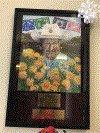How the U.S.-Mexico border influences adolescent substance use: Youth participatory action research using photovoice
- PMID: 31353247
- PMCID: PMC6899179
- DOI: 10.1016/j.drugpo.2019.07.011
How the U.S.-Mexico border influences adolescent substance use: Youth participatory action research using photovoice
Abstract
Introduction: The purpose of this study is to use Youth Participatory Action Research (YPAR) methods and Photovoice to identify the perceived environmental factors that influence substance use among adolescents living at the U.S.-Mexico border.
Methods: One academic and a local youth health coalition engaged in Youth Participatory Action Research (YPAR) using Photovoice and qualitative methods to examine the perceived factors influencing adolescent substance use in their border community.
Results: Identified novel risk factors for adolescent substance use on the border included the normalization of drug trafficking, normalization of substance use, and cross-border access to substances. Novel protective factors included living in a close-knit binational community and having strong binational family and social support systems. The findings also illustrate a nexus of 'factors' wherein risk and protective elements overlap.
Conclusion: This study contributes to the broader literature on international border health and how living in a border space influences adolescent substance use. The examination of influential border-bound factors provides a more complete understanding of the experiences of youth living on the U.S.-Mexico border, and informs the field of the importance of considering the border experience for future prevention and risk reduction efforts with border adolescents.
Keywords: Adolescent substance use; Adolescents; Latino; Photovoice; U.S.-Mexico border; Youth participatory action research.
Copyright © 2019 Elsevier B.V. All rights reserved.
Conflict of interest statement
Declaration of Competing Interest
The authors have no financial or personal conflicts of interests to disclose.
Figures
References
-
- Almodovar A, Tomaka J, Thompson S, Mckinnon S, & O’Rourke K (2006). Risk and protective factors among high school students on the US/Mexico border. American Journal of Health Behavior, 30(6), 745–752. - PubMed
-
- Aneshensel CS, & Sucoff CA (1996). The neighborhood context of adolescent mental health. Journal of Health and Social Behavior, 293–310. - PubMed
-
- ASQ (2017). Learn about quality: Affinity diagram Retrieved from http://asq.org/learn-about-quality/idea-creation-tools/overview/affinity....
-
- Becerra D, & Castillo J (2011). Culturally protective parenting practices against substance use among adolescents in Mexico. Journal of Substance Use, 16(2), 136–149.











